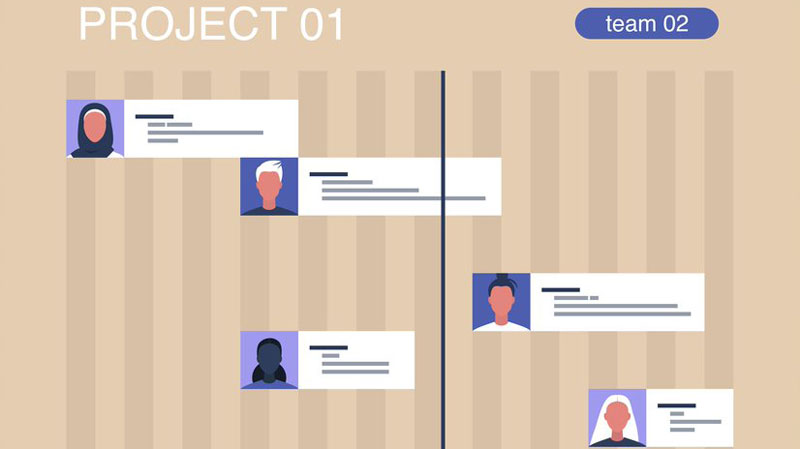 With remote work on the rise, choosing the right online project management software is more important than ever.
With remote work on the rise, choosing the right online project management software is more important than ever.
In the past, remote and distributed work was largely associated with IT and software development. These days, teams across all industries are collaborating remotely.
A staggering 73% of employers are expected to have remote workers on their team by 2028. With the demand for remote collaboration increasing, there’s a greater need for project managers to use software that supports remote and distributed collaboration.
If you’re interested in making the jump to online project management software, this post will help you get started.
3 Key Features to Look for in Online Project Management Software
If you’re still using spreadsheets, remote project management might feel like managing while blindfolded. Fortunately, technology has come a long way.
You can now collaborate with software designed specifically for remote and distributed teams. Below are some features to look for when selecting online project management software to help you improve team efficiency and effectiveness.
1. Tools for maintaining a clear and open channel of communication
Good communication is essential for reaching project success, and when you’re managing remote teams, communication is more important than ever. One of the biggest advantages collocated teams have over their remote counterparts is being able to communicate with management and teammates in real-time. If a team member needs help or clarification, they can walk over to their colleague’s desk and talk to them.
Communication doesn’t happen organically with remote projects. Updates take place on different platforms, like email, spreadsheets, and video conferences, and members may use collaborative tools that aren’t compatible. This makes it harder for everyone involved to stay up to date. The good news is that you can improve communication with your remote teams with online project management software that provides real-time correspondence with team members and external collaborators. This keeps all communication contained under one roof, making it easier for everyone involved to share important information like feedback, ideas, and status updates.
The good news is that you can improve communication with your remote teams with online project management software that provides real-time correspondence with team members and external collaborators. This keeps all communication contained under one roof, making it easier for everyone involved to share important information like feedback, ideas, and status updates.
To remove even more communication barriers, consider looking for online project management software that integrates with popular video conferencing tools like Zoom. That will help with planning and scheduling project kickoff meetings, daily briefings, and any other types of meetings that help remote teams complete their tasks.
2. Integrated file sharing and document management services
An effective document management system can reduce a lot of unnecessary friction by giving teams and stakeholders to access important information. Thanks to cloud technology, sharing files with teams has never been easier. But alternating between your project management platform and a standalone database isn’t the most efficient way to share information.
When you’re working with remote teams, the last thing you need is an unnecessary go-between that can disrupt the flow of information. Choose online project management software with built-in file storage.
This gives you and your team a centralized database for storing important assets, like contracts, reports, video clips, CAD drawings, blueprints, and anything else teammates need while working on a project. Some key features to look for in an all-in-one document management system include:
- High-level security features and restore options
- Setting access rights and document restrictions
- The ability to attach relevant files to task cards
- The ability to share files with external collaborators
- A tagging feature to notify relevant team members of documents that were recently uploaded or edited
- Integration support with other popular cloud storage platforms
- Mobile support for on-the-go collaboration
Centralized document storage makes it easier for team members to locate important information, while also ensuring assets aren’t being restricted to departmental silos.
3. Tools for assigning tasks and monitoring progress
Tracking the work and productivity of remote teams is challenging. The lack of face-to-face interactions make it difficult to assess whether a team member is struggling with a task, or if they’re not meeting productivity goals. Setbacks like these could cost your team time and money if they aren’t addressed, which is why it’s critical to choose online project management software that increases workflow transparency.
The days of using spreadsheets have come to an end. To keep up with today’s fast-paced world, remote project managers must use solutions specifically designed with their needs in mind.
Gantt charts make it easier to plan projects, while Kanban boards help with assigning tasks and monitoring how tasks move through the workflow. Both tools offer more transparency by letting you visualize work, while project dashboards and powerful reporting features offer real-time insights into whether tasks are completed on time and if your project is aligned with customer and stakeholder interests.
Finding the Right Software for Your Project
Remote project management can be challenging, but with the right software support, you can collaborate with your teams every step of the way.
Want to get work done faster?
Download our eBook titled 6 Steps to Accelerate Project Planning and Delivery.




